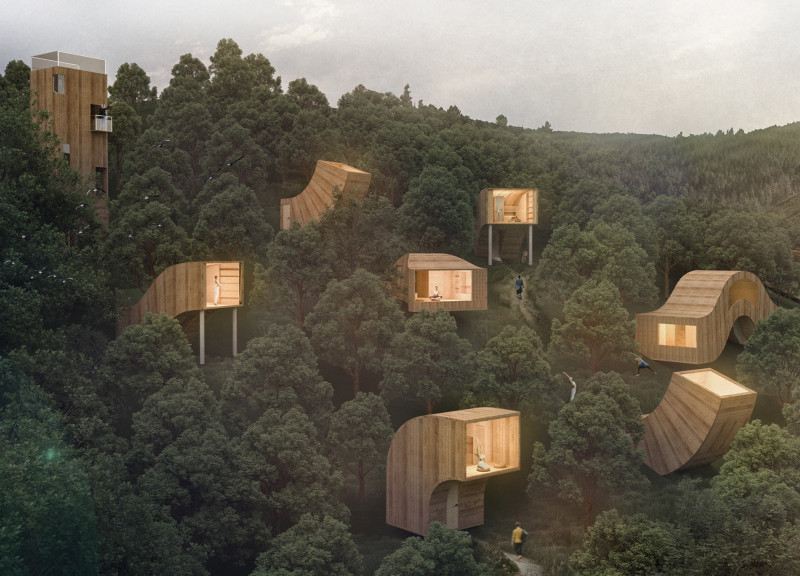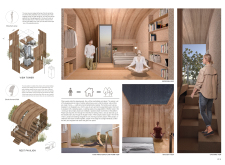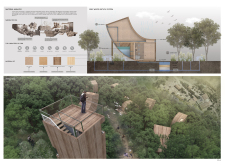5 key facts about this project
The concept of Surya Namaskara, or Sun Salutation, serves as the foundation for the design, integrating the movements of yoga into the built environment. Set on a hillside, the design includes five sleeping pods, a view tower, and a rest pavilion. Each element aims to enhance the connection between people and the natural world, promoting mindfulness and relaxation through its thoughtful arrangement.
Sleeping Pods
-
The sleeping pods are laid out to fit harmoniously with the landscape. They are not just places to rest; they also serve for washing and practicing yoga. With large windows and skylights, these spaces bring in ample natural light, making the interiors feel open and inviting. This design encourages a sense of calm, allowing occupants to connect with their surroundings.
View Tower
-
At the highest point of the site stands the view tower. This structure offers a way to observe the beauty of the area. Visitors can reach the top using a lift or stairs, inviting exploration. The tower's positioning allows for clear sightlines, enhancing the relationship between the architecture and the surrounding landscape.
Rest Pavilion
-
The rest pavilion is placed at the entrance, serving as a communal area for visitors. It features steps of different heights that create seating options and encourage people to engage with the outdoors. This layout supports social interaction and highlights the importance of community in a natural setting.
Materials for the project include outdoor anticorrosive wood on the exterior, ensuring durability throughout the seasons. The sleeping pods incorporate cork in their interiors, a material that provides good sound insulation and comfort. Such choices reflect a commitment to sustainable design, offering a simple yet effective approach to blending the built environment with nature.
In this tranquil environment, the architecture fosters a dialogue between individuals and the landscape, allowing users to experience a deeper sense of peace.






















































